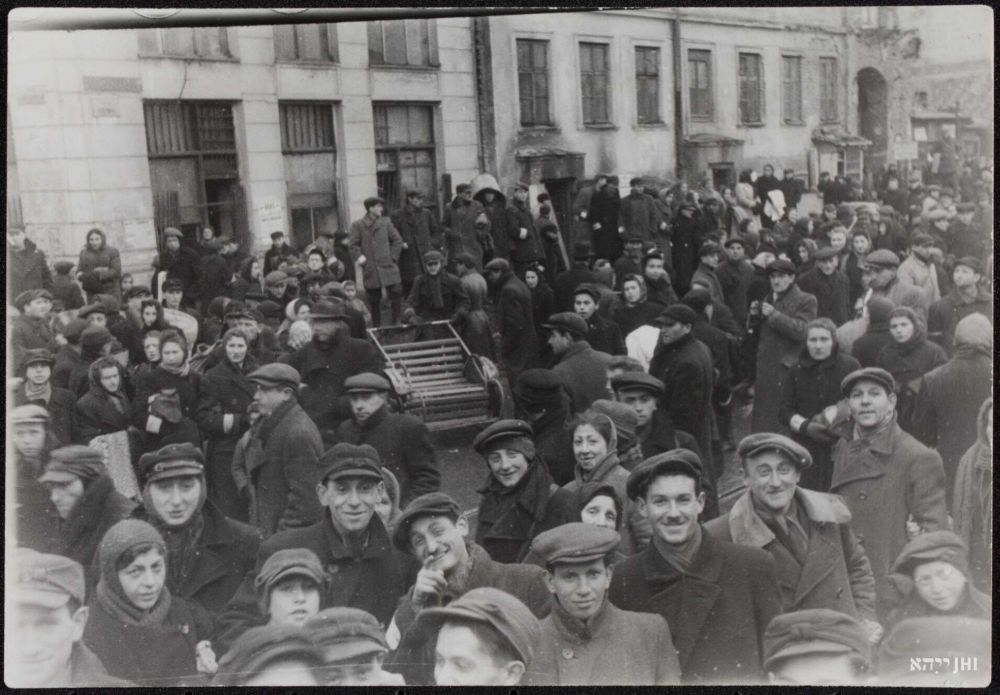- News
- Events
- Oneg Shabbat
- Collections
- Research
- Exhibitions
- Education
- Publishing Department
- Genealogy
- About the Institute
- Bookstore


“People smile, and even laugh at the photographer. Perhaps there is some kind of familiarity between him and other people. The one holding the camera is one of them, he is ‘one of their own’. This photograph also shows the favourite reporter style of Henryk Bojm,” writes Anna Duńczyk-Szulc about the photography from 80 years ago. It shows Jews gathered under a “barker”, or loudspeaker, in the Warsaw Ghetto.
The people in the photo await the release of 151 prisoners from the Central Arrest at 24 Gęsia Street – Czerniaków himself intervened in their case. Most of them have faces neither shaggy nor emaciated. These people probably did relatively well in the ghetto. Maybe there are rickshaw drivers or smugglers among them. They look fairly normal.
_______
During the autumn of 1939, special loudspeakers, popularly known as “barkers”, were installed on the streets of Warsaw. The Germans also forbade Poles and Jews to have radios; the equipment had to be handed over to the occupier.
On the holiday of Yom Kippur, October 12, 1940, at 4:00 p.m., the barkers announced “medieval and bad news, that a special closed Jewish ‘residential district’ is being created for the Jews”, wrote the anonymous author of the Ringelblum Archive, most likely Jechiel Górny. In the Warsaw Ghetto, megaphones were installed on the corner of Miła and Zamenhofa, Gęsia and Zamenhofa, Nowolipki and Nalewki Streets, and in some other places. The inhabitants listened to the messages about the bombing of London, about the consistent successes of the German troops.
“Only information was given through the loudspeakers; as a rule, it was not accompanied by any commentary. Loudspeakers were very popular (they had their ‘regular customers’) because they were free and provided up-to-date news. When something important happened, people flocked to the megaphones,” writes researcher Dr. Maria Ferenc.
Emanuel Ringelblum noted that, apart from informing about the war situation, the barkers “constantly call for the persecution of Jews, demonstrating their harmfulness to the whole of Europe, as war mongers, as parasites.” Nevertheless, Jews were likewise eager to listen to the barkers, because they found news that gave hope even in the midst of German propaganda.
When, on June 22, 1941, the barkers informed that the German army had “with God's help” opened the Eastern Front, many of the ghetto inhabitants reacted with euphoria. They believed that the Germans would not be able to defeat the USSR. They were right, but Warsaw was liberated from the German troops 20 months after the liquidation of the ghetto. Henryk Bojm, the author of the photo, was killed with his wife and son in a bunker during the ghetto uprising in the spring of 1943.
_______
Photo source: The Ringelblum Archive, JHI collection